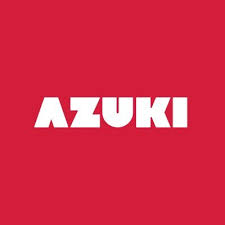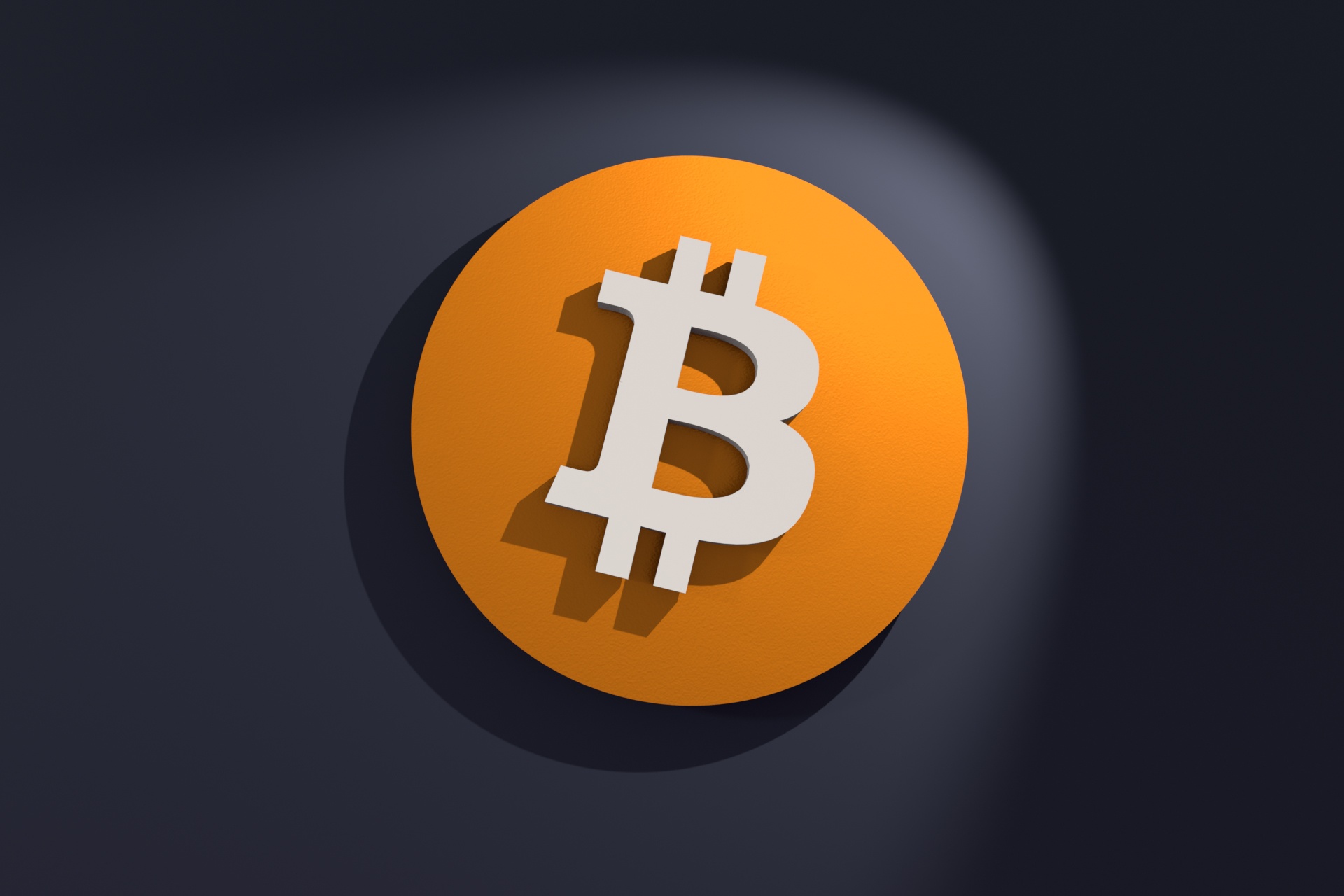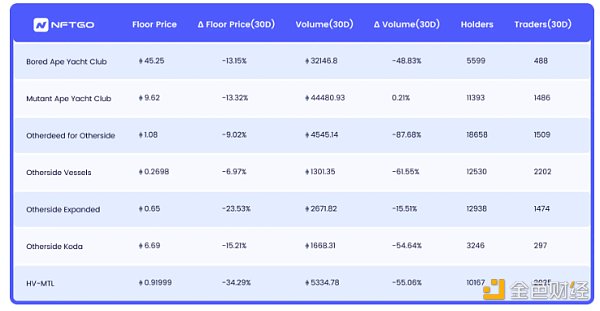The key to the DeFi movement: use cases and opportunities for synthetic assets
Although the main use case for encrypted assets is still speculation, I don't think this is a bad thing. Speculation is a key driver of the development of traditional financial markets and continues to play an important role today. Most importantly, speculators provide liquidity, making it easier for participants to enter or exit the market. This reduces transaction costs and increases market participants' access.
At present, the crypto-asset market is still immature and lacks liquidity. Unlike assets in the traditional financial system, most crypto assets are used for less than a few years. Insufficient liquidity limits the effectiveness of the underlying agreement, as we have seen in the Decentralized Exchange (DEX) and forecasting markets.
I believe that the crypto-asset market will develop in a similar way to traditional financial markets, so both institutional and retail participants will need more sophisticated financial instruments, especially synthetic assets.
Here, I will:
- Moscow used the blockchain to vote for the election, was cracked in 20 minutes and won $15,000 in prize money.
- Restore 28,000 bitcoins behind the lost Rashomon
- Twitter Featured | Analyze the current status of lightning network: nodes can not make ends meet, channel, capacity stagnant growth
- Provide an overview of synthetic assets, explain what they are and how they are used in traditional financial markets.
- Explain why synthetic assets are critical to the maturity of the crypto-asset market and provide examples of projects that use synthetic assets today.
- Provide examples of new "password native" derivatives that can be built.
The first part mainly introduces the basic explanation and examples of synthetic assets. If you are familiar with this (or feel that financial engineering is too boring), scroll down to the bottom half of the article.
What is a synthetic asset?
Synthetic assets are a financial tool that simulates other tools. In other words, the risk/reward profile of any financial instrument can be modeled using a combination of other financial instruments.
A synthetic asset consists of one or more derivatives that are assets based on the underlying asset value, including:
· Forward commitment: futures, forwards and swaps
• Contingent claims: options, credit derivatives, such as credit default swaps (CDS) and asset-backed securities.
What is the use of synthetic assets?
There are many reasons why investors choose to buy synthetic assets. These include:
- Financing
- Liquidity creation
- admission to market
Below, I will provide an overview and examples of traditional finance for these reasons. Please note that these are not mutually exclusive.
Financing
Synthetic assets can reduce financing costs.
An example of this is the Total Return Swap (TRS), which is used as a financing tool for asset financing. It allows a party to obtain funds for the pool of assets it already owns, while swap counterparties can earn interest from funds secured by the asset pool. In this case, TRS is similar to a secured loan because:
- The party that sells the securities and agrees to repurchase is the party that needs financing.
- The party that purchases the securities and agrees to sell to the bank is the party that provides the financing.
Liquidity creation
Synthetic assets can be used to inject liquidity into the market, thereby reducing the cost of investors.
Credit default swaps (CDS) is an example. CDS is a two-party (a credit protection buyer and a credit protection seller) derivative contract in which the buyer pays a series of cash to the seller and receives a promise of damages from the "credit event", such as failure to pay, Bankruptcy or restructuring. This gives CDS sellers the ability to aggregate more than one underlying asset, while CDS buyers have the ability to hedge their credit risk exposure to an underlying asset.
In this article, the authors argue that the CDS market is more liquid than its underlying bond market. One of the main reasons is standardization: bonds issued by a particular company are usually split into many different issuances, and the coupon rates, maturities, contracts, etc. of these bonds vary. The resulting decentralization reduces the liquidity of these bonds. On the other hand, the CDS market provides a standardized place for the company's credit risk.
admission to market
Synthetic assets can re-create the cash flow of almost any kind of securities through combination of tools and derivatives, opening up markets to relatively free participants.
For example, we can also use CDS to replicate the exposure of bonds. This is helpful in situations where bonds are difficult to obtain on the open market (for example, there may not be any bonds available).
Let me give you a concrete example. Take the Tesla 5-year bond as an example. Its yield is 600 basis points higher than the US Treasury bond:
- Purchase a $100,000 5-year bond and use it as a collateral.
- Write (sell) a five-year, $100,000 CDS contract.
- Earn interest on government bonds and receive an annual premium of 600 basis points for CDS.
If there is no default, the US Treasury bond coupon plus the CDS premium will yield the same rate of return as the 5-year Tesla bond. If the Tesla bond defaults, its portfolio value will be US Treasury bonds minus CDS payments, which is equivalent to the default loss of Tesla bonds. Therefore, in either case (default or non-default), the return on the portfolio (treasure debt + CDS) will be the same as holding the Tesla bond.
What is a good synthetic asset?
In some cases, the development of synthetic asset products is only possible after the potential liquidity reaches a critical mass. If the liquidity of the underlying assets is too low, there is no point in creating a synthetic asset because it may reduce economic efficiency.
Total Return Swap (TRS) is a good example. Although the credit derivatives market began to form in the early 1990s, total return swaps were not widely quoted or traded within a few years. In fact, investors or speculators seeking to invest in a particular corporate bond or bond index are more likely to buy or short-sell reference bonds or indices. As market makers began to manage their credit portfolios more aggressively and offer two-way quotes for a range of credit derivatives, trading activity began to increase, and opportunities for investors to participate in synthetic asset credit positions through total return swaps improved. As a strong two-way market begins to take shape, the composite bid spread is compressed, attracting more end users eager to take on or transfer credit. The market is now able to support a broad credit reference as the underlying credit derivatives market is liquid, active and well supported.
Why are synthetic assets and DeFi?
In the Decented Finance (DeFi) ecosystem, there are several reasons why synthetic assets can be useful to multiple participants.
Extended assets
One of the biggest challenges in the field is to chain real-world assets in a way that doesn't require trust. The fiat currency is an example. While it is possible to create a statutory currency-guaranteed stable asset like Tether, another way is to get a comprehensive price exposure to the dollar without having to hold the actual asset from a centralized counterparty. For many users, the price exposure is good enough. Synthetic assets provide a mechanism for trading real assets on blockchains.
One of the main problems in expanding liquidity DeFi is the lack of liquidity. Market makers play an important role in this aspect of long tail and mature cryptographic assets, but financial instruments for proper risk management are limited. More broadly, synthetic assets and derivatives can help markets expand their business by hedging positions and protecting profits.
Extended technology
Another issue is the technical limitations of the current smart contract platform. We have not addressed cross-chain communications, which limits the availability of assets in decentralized exchanges. However, for a comprehensive price risk exposure, traders do not need to own assets directly.
Expanding participation While traditionally synthetic assets are only open to large and experienced investors, unlicensed smart contract platforms like Ethereum allow smaller investors to get their benefits. It will also allow more traditional investment managers to enter the field by adding a risk management toolset.
Synthetic assets in DeFi
In fact, synthetic assets have been widely used in DeFi. Below I will provide several examples of projects that use synthetic assets, as well as a simplified diagram of the asset creation process.
·Purple = actual assets
·Green = synthetic assets
Abra
Founded in 2014, Abra is an OG for synthetic assets in the field of cryptographic assets. When an Abra user deposits funds into their wallet, the funds are immediately converted to Bitcoin and displayed in the Abra APP in US dollars. For example, if Alice deposits $100 into her Abra wallet and the price of Bitcoin is $10,000, she will receive a 0.01 BTC deposit and display it as $100. Abra can do this by maintaining a BTC/USD peg, which guarantees Alice has the right to redeem $100 regardless of BTC or USD price fluctuations. In fact, Abra is creating a stable currency for encryption guarantees.

In addition, Abra immediately hedges the risk so it can cash in on all transactions at any time. When users fund their wallets, they are actually short on Bitcoin and long on hedged assets, while Abra is long on Bitcoin and short on hedged assets.
MakerDAO

Maker's Dai Stabilizer is probably the most widely known and widely used synthetic asset in DeFi. By locking Ethereum as a collateral, users can create a synthetic asset, Dai, which maintains a soft link to the dollar. In fact, the token holders received a comprehensive price exposure of the US dollar. Similar to Abra's design, this “collateral-backed synthetic asset” model is also popular in many other agreements.
UMA
UMA provides TRS with an agreement on the Ethereum platform to provide synthetic asset exposure for a wide range of assets.
This smart contract contains the economic, termination and margin requirements for bilateral agreements between Alice and Bob. It also requires a price feedback database to return the current price of the underlying reference asset.

One implementation of the agreement is the USStocks ERC20 token, which represents the US Standard & Poor's 500 Index and trades on the decentralized exchange DDEX. This is achieved by fully pledgeing one of the UMA contracts and then tokenizing the margin account to obtain the majority of the synthetic assets ownership of the contract.
MARKET Agreement

The MARKET protocol allows users to create synthetic assets and track the prices of all reference assets through a database. These “position tokens” provide a limited long and short exposure to the underlying target and provide a return structure similar to the call spread in traditional finance. Similar to Dai, long (to) and short (short) tokens represent ownership of the collateral pool.
Rainbow Network
The Rainbow Network is an off-chain unmanaged exchange and payment network that supports any liquid asset. It consists of "Rainbow channels", a variant of the payment channel, and the settlement balance is calculated based on the current price of other assets. In other words, the agreement nests synthetic assets and other assets in a payment channel.

Synthetix is a distribution platform, collateral type and exchange that allows users to cast a range of synthetic assets. Similar to Maker, users lock in collateral to create synthetic assets and need to repay the loan to recover the collateral. The user can then "exchange" a synthetic asset to another user via the database. Please note that "exchange" has no direct counterparty – the user is actually re-pricing the collateral according to the database. That is to say, due to the centralized guarantee mechanism, SNX's bettor collectively bears the counterparty risk of other users' synthetic asset positions.
Encrypted asset native derivative
The representation of synthetic assets of real assets is an important first step, but I believe that the design space for derivatives in crypto assets is huge and largely undeveloped. This includes traditional derivatives designed for various players in the crypto-asset market, as well as “encrypted asset native” derivatives that did not exist in traditional financial markets.
Below I will provide a few examples of these two variants, many of which may not be feasible, or not large enough to get liquidity.
Bitcoin mining difficulty swap
The premise is to provide a hedging tool for miners who want to reduce the risk of increasing the difficulty of bitcoin's expected production (ie, the “difficulty curve risk” of the miners). This was actually designed by BitOoda and is now available as a financial settlement product, which means that settlement is done through legal tender transfers, rather than renting or lending physical computing capabilities. In terms of scale, it is unclear how attractive the product will be in the seller (ie who is doing the long mining difficulty?) and the market maker (ie the swap dealer). Large miners are also likely to manipulate the market (eg collusion to reduce mining difficulty).
Computational swap
The idea is for a mining company to sell some of its mining capacity to buyers, such as a fund, in exchange for cash. This allows miners to achieve a steady stream of income, independent of potential crypto asset prices, and allows the fund to invest in crypto assets without investing in mining equipment. In other words, mining companies are able to hedge market risk because they do not have to rely on the market price of the crypto assets being mined to maintain profitability. BitOoda also builds and delivers this functionality through their "Calculation Weekly Expandable Contract."
Electricity futures
This product has been in the traditional commodity market for quite some time, but can be offered to cryptocurrency miners. The miner only needs to sign a futures agreement to purchase electricity at a given price at a later agreed time (for example, 3 months). This gives miners the ability to hedge their energy risks, as a sharp rise in electricity costs may make mining impossible. In other words, miners have changed the cost of electricity from variable to fixed.
Staking earnings swap
This will allow certifiers of the PoS network to hedge the market risk exposure of the crypto assets they choose. Similar to a power swap, the verifier will sell a portion of its staking revenue in exchange for cash. This will allow the verifier to get a fixed amount from the assets it locks, and the buyer will get the lock-in gain without setting up the staking infrastructure.
Vest is already on the line, and Vest is a market that allows users to purchase future staking rewards, allowing lockers to reduce the difference in their staking rewards. The project does this through a "staking contract" that allows the user to pay X during T and get rewards from the mortgage Z tokens.
Cut penalty swaps
This will allow the principal involved in the equity network certification to hedge its operational risk exposure for its selected verifier. You can think of a sharp cut as a credit event and a sharp cut in fines as insurance against that event. If the verifier is cut, the principal will receive compensation to cover the loss. The seller who cuts the penalty swap is actually doing the certifier's operation, or even the verifier itself. In terms of scale, this may give the agreement designer an interesting dilemma – those who short the verifier will be encouraged to undermine their operations.
Stability fee swap
Although the current Maker Stability Fee is 16.5%, from July 13 to August 22, 2019, this ratio is as high as 20.5%. CDP holders may wish to reduce the risk of rising stable costs (variable interest rates), so they can sign swap agreements with counterparties and pay fixed fees (interest rate swaps) within a given time frame.
airdrop
This will be an option to purchase an encrypted asset with an execution price equal to the price of the airdrop. The payment structure obtained by the option buyer is similar to a well-funded call option, and the premium is equal to the market price of the airdrop. If the airdrop performs well, the buyer exercises the option and the seller delivers the encrypted asset. If the airdrop does not meet expectations, the buyer does not exercise the option and the seller collects the premium.
Lockdrop
This is a bilateral agreement that allows buyers to purchase encrypted assets released from lockdrop at a given price. The buyer pays the seller a premium, which reflects the illiquidity and opportunity cost associated with the locked asset, but allows the buyer to gain exposure to the new crypto asset without the underlying assets necessary for lockdrop.
in conclusion
If you have already done this, consider becoming a Chartered Financial Analyst (CFA)! Synthetic assets are a complex financial instrument that has repeatedly caused trouble to the global economy. Similarly, they may pose a risk to protocol security in ways that we do not yet understand. Despite this, synthetic assets still play an important role in traditional financial markets and are becoming a key component of the DeFi movement. The industry is still in its infancy, and we need developers and financiers to conduct more experiments in order to bring new financial products to market.
Many thanks to Dan Robinson, Kain Warwick and Matteo Leibowitz for their feedback on this article.
We will continue to update Blocking; if you have any questions or suggestions, please contact us!
Was this article helpful?
93 out of 132 found this helpful
Related articles
- Microsoft shot! Jointly released Ethereum expansion solution Nahmii
- Babbitt Column | Digital Currency Great Navigation Age: Private License and Supervision Sandbox Park, Drake and Zheng Chenggong
- Analysis | What is the relationship between the development of DeFi and the supply and demand of ETH?
- Mu Changchun Open Class: Libra conspiracy and DCEP
- The main characteristics of digital currency Libra and China's countermeasures
- Getting started with blockchain | I heard that the counterparty trading on the trading platform is sometimes not a person?
- Opinion: Will the traditional currency circle “sit and wait” before the regular army arrives?






